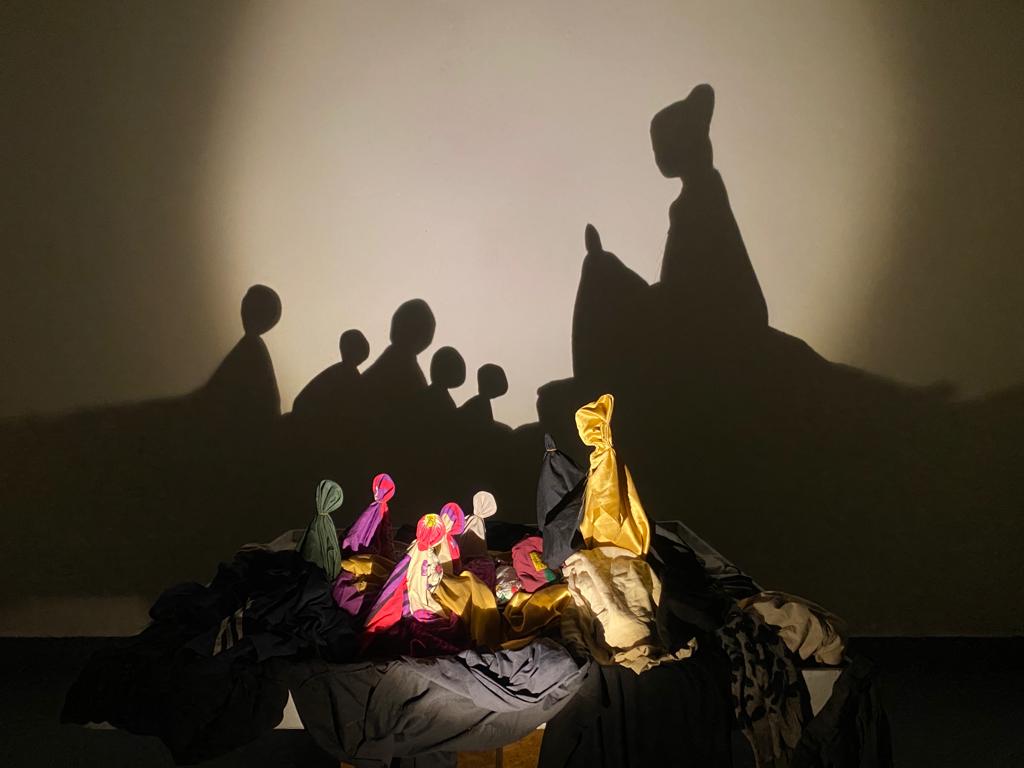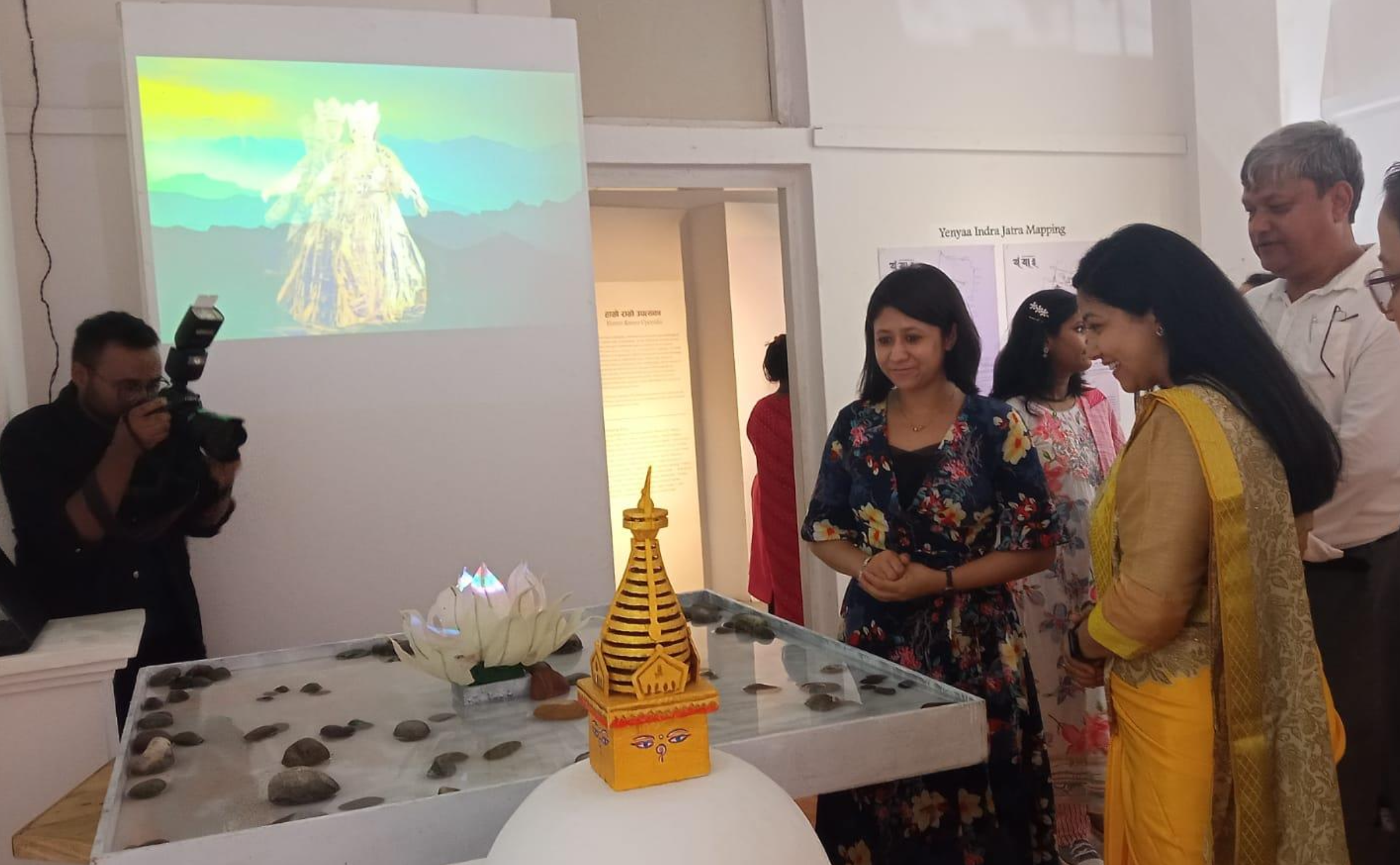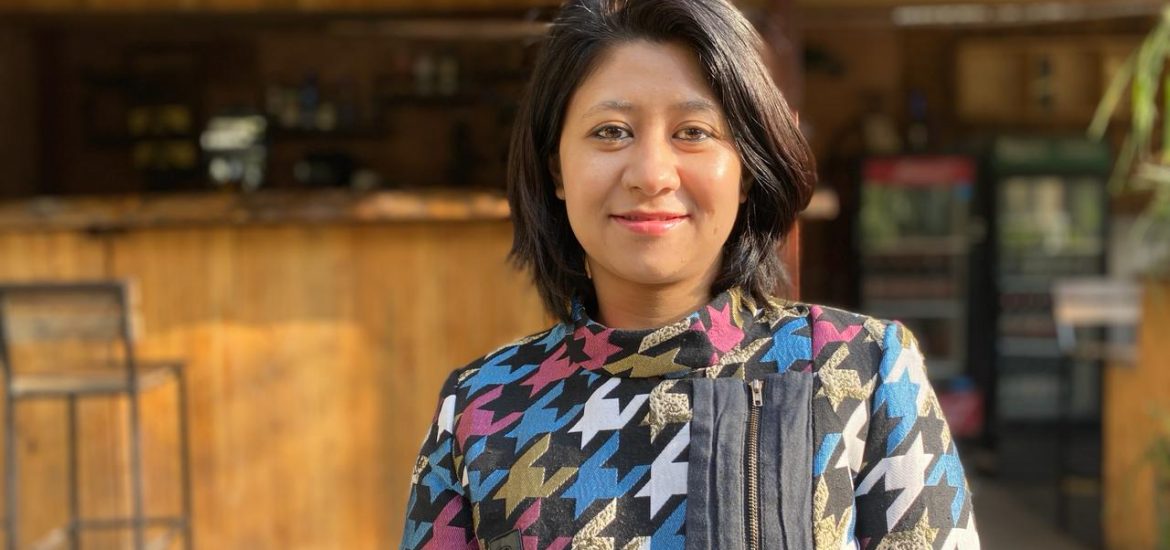Anyone can be an artist. But to really make good art, it seems that by definition it has to be an emotionally charged activity, one in which the creator “invests” their interior being into an outer expression of beauty. Of course, there are classical definitions of beauty, and not only in the (still) Eurocentric halls of art history. Nepalese traditional art, paubha, has maintained a strict transmission of standards for the appearance of deities in thangkas. It is not so easy to impose universal definitions of beauty to contemporary art, such as installations and performance art. In a recent conversation with Nepalese artist Mahima Singh, she noted that contemporary art arrived in Nepal quite literally in contemporary times: as late as 1997 or 1998.
“I did my first performance art in a public space in 2007. People here are more familiar with street drama [a story with a clear narrative and message]. So, local people incorrectly think our performing art troupe is performing street drama but what we are doing is completely different, much more abstract, and they often get confused by what’s going on,” she laughs. Things are improving slightly with a growing interest in performance art, as well as courses now available at various art schools. But few artists currently practice it as their main thing, preferring to prioritize more financially secure components of their repertoire: in particular, painting.
The individual’s engagement and making peace with emotions seems to be especially important for her, whose “Transcendence through Simplicity” (2024) installation was showcased at the Kathmandu Art Biennale: Spiritual Edition. She used the medium of “shadow art,” with the materials drawn from discarded and repurposed clothes. Mounds of these old clothes were used to create, when their shadows are lit on the wall, anamorphic figures of the Buddha and his disciples during the first sermon at Deer Park, Varanasi.

“As shadows fade and change with the shifting of light, so too do our cravings for material goods, in pursuit of an elusive happiness, transform and wane over time,” noted Mahima. She attempted to communicate a philosophy of minimalism, showing that happiness can be found through simplicity. I would interpret her piece as using what seems to be merely daily cheap items into what the inner heart can understand as a profound message: the shadow of the clothes in the shape of the Buddha teaching his disciples.
Mahima likes to call herself an installation and performance artist. She has taken students to workshops that combine Buddhist philosophy with art, and visits different schools each month to teach contemporary art. Her journey into contemporary art parallels a deep and sometimes difficult engagement with her own emotions. Grief, sadness, anger, and many other negative emotions manifest when things do not go the way we want, and this can fall on a spectrum, from minor disappointments to catastrophic, traumatic events. She did not absorb the Buddha’s teachings in a visceral way until learning of the death of her sister during the 2015 earthquake, which levelled so much of Kathmandu.
“The earthquake was more than just a disastrous piece of news where over 9,000 people died. I feel it deep inside to this day,” she said, visibly hurt by the painful recollection. “It made me feel bad how the government and the media made everything about numbers, when among those 9,000 was my sister, with the rich life and personhood that I knew and loved. The same goes for all those other individuals.” In 2019, she exhibited in South Korea a series of acrylic numbers and resin cast sculptures, titled: “9000+ they are not just numbers.”

Mahima and her husband currently run a center for artists. Called Vikalpa, which means “alternative” in Nepali, it promotes non-mainstream art (non-painting and installation) but must rely on international funding, which by its nature is not very regular. “Individual effort isn’t enough. It must come from the government with a bigger vision for art,” she said. “If that happens, there might be many individual artists and funders that feel motivated to contribute to this field. But so far, our overtures to the government remain in vain due to a lack of funds, with our requests for funding being sometimes answered on a project basis by various foreign embassies that appreciate our efforts, such as the Swiss.”
Her next exhibit is going to be in March, at Dzongsar Khyentse Rinpoche’s Licchavi House in Baudha. “My installation art is another expression of impermanence. I find the concept of impermanence very important to understand in life. When we get attached to transient things, we suffer. Of course, this becomes tricky to apply to daily life.” And she is correct. The greatest challenge of Buddhism is possessing this knowledge about things as they are, tatha, yet our emotions and attachments pull us to behave in ways that are not congruent with those realities. “The shadow of impermanence seems heavier these days in my artworks.” Her experience of loss, and her ongoing journey in that context, surely has universal echoes.
See more
Creativity rises from the rubble of Nepal’s 2015 earthquake (Nikkei Asia)
Mahima Singh: Dancing to the tunes of Buddha’s lessons in pursuit of beauty in life (Online Khabar)
Related blog posts from BDG
Museum of Nepali Art Hosts Nepal’s First Art Biennale in Kathmandu
Related features from BDG
What I Learned about Nepalese Art after the Kathmandu Art Biennale’s Opening


